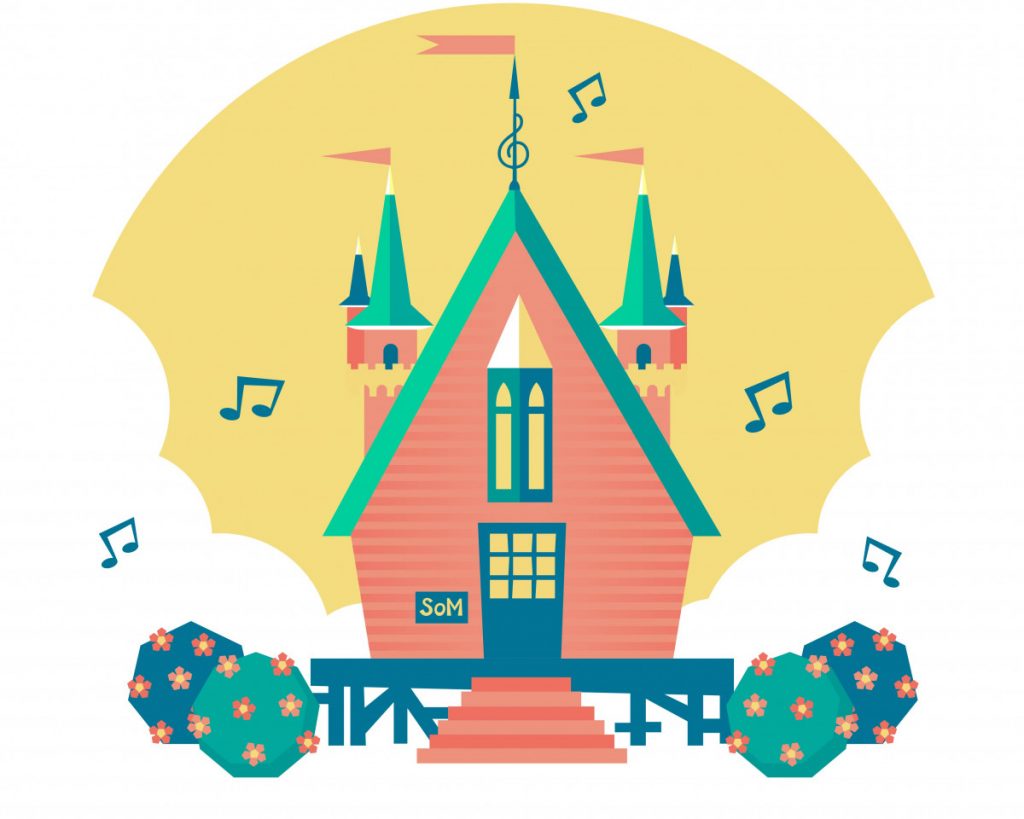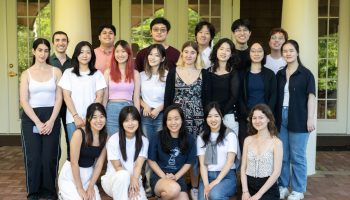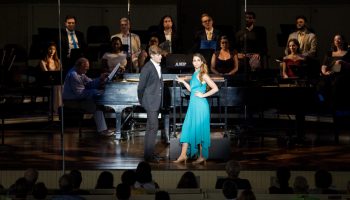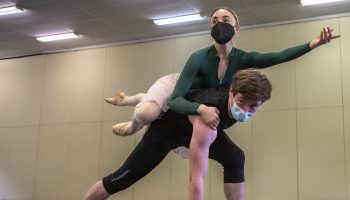
Through arpeggios, flamenco rhythms and lip trills, two Chautauqua School of Music instrumental students will conjure the imagery of Spain in their third recital of the season.
Rebecca Salo, a french horn player from Indiana University, will perform Vitaly Buyanovsky’s “España” for solo horn.
Buyanovsky is considered one of the most influential teachers and players in the “Russian Horn School,” or Leningrad Conservatory, now known as the St. Petersburg Conservatory. Throughout his five-decade career, Buyanovsky produced several original and transcribed works for horn, including his collection “Pieces for Solo Horn,” subtitled “Four Improvisations from Travelling Impressions.” Each movement represents a different location — Scandinavia, Italy, Spain and Japan.
Salo said Buyanovsky uses “traditional horn techniques” such as lip trills and stopped horn techniques to generate the imagery of each individual country, and sounds of clanging church bells, eccentric rhythms and an “air of flamboyance” illustrate Spain.
“When you listen to it, you can easily picture someone with a guitar in the countryside singing along with it,” Salo said. “It paints a beautiful portrait of the culture and community.”
Salo and four other students from the Chautauqua School of Music will take to the digital stage at 7 p.m. EDT Thursday, July 30, on the CHQ Assembly Virtual Porch. Joining her is cellist Emma Osterreider and violinists Eugenia Cho, Katherine Morris and Julimar Gonzalez.
There is a lot of energy to put into it and a lot of technical elements, especially in the sense of intonation,” Gonzalez said. “It’s nerve-wracking, but once you get through it, you have the satisfaction of knowing you just finished a performance that took every part of you to complete.”
Through arpeggios, Salo said “España” makes use of flamenco guitar rhythms and phrasing. Flamenco is a form of song, dance, and instrumental music commonly associated with the Andalusian Roma of southern Spain.
“It is wild and rambunctious, to be very straightforward,” she said. “It is so full of spunk and flavor that it’s a ride for both the performer and the audience to experience.”
Even though the piece is less than five minutes long, Salo said it is “demanding in terms of endurance.”
“It is high in range, so it asks for a lot from the performer, like a lot of acrobatic movements to different registers,” she said. “It is quite involved, so you really have to be smart about your pacing or it gets the best of you.”
Julimar Gonzalez, violinist from Roosevelt University’s Chicago College of Performing Arts, will play French composer Camille Saint-Saëns’ Violin Concerto No. 3 in B minor, Op. 61. Composed in 1880, Saint-Saëns dedicated the concerto to Spanish composer and violinist Pablo de Sarasate, who played the solo at its premiere in January 1881.
“Pablo, to me and many others, is still the greatest Spanish violinist of all time,” Gonzalez said. “There was seemingly nothing he couldn’t do. You can hear and see the lengths of the instrument in this piece thanks to his versatility.”
Gonzalez will play the first of its three movements, which she said has a bold, dramatic first theme, followed by a lighter, contrasting theme. Intertwined in its Spanish notes are a handful of rapid scales, arpeggios and double stops.
“There is a lot of fire and passion in this piece, with a hint of romanticism to it,” she said. “The hard part is to diminish that fire. There are so many moments of intensity in this piece, that you have to work to find a moment to relax the sound before you practically fall over.”
Gonzalez was working on the piece earlier in the year to enter into a competition and said she figured there was “no better time than now” to begin rehearsing and performing it again. Every time she has come back to it, however, she said it’s “harder than I remember it.”
“There is a lot of energy to put into it and a lot of technical elements, especially in the sense of intonation,” Gonzalez said. “It’s nerve-wracking, but once you get through it, you have the satisfaction of knowing you just finished a performance that took every part of you to complete.”




